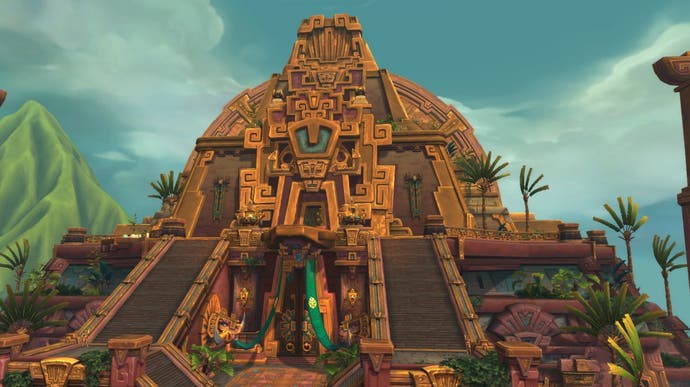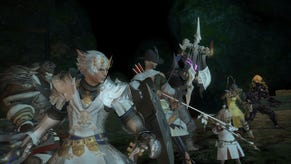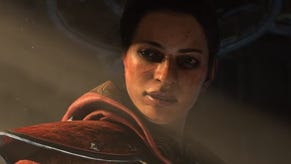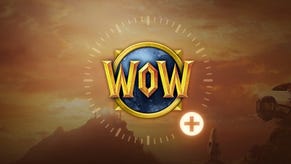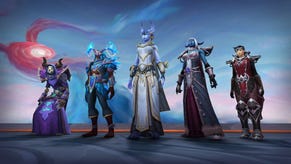Levelling in World of Warcraft is about to undergo its biggest change in a decade - maybe ever
Reporting from the Shadowlands beta.
World of Warcraft: Shadowlands will be released on October 27th, and we have 150 keys to the current beta test to give away.
Massively multiplayer games like World of Warcraft don't get sequels. That was tried once and it turned out to be a bad idea. EverQuest 2, the 2004 follow-up to the enormously influential 1999 game, just ended up dividing the audience of a game that had been doing just fine before it came along. Most players were far too invested in the characters they already had, the systems they could feel in their bones and their muscle memory, to start again. It flopped, and OG EverQuest never quite recovered from this filial blow, although it soldiers on to this day.
So MMO developers just keep releasing expansions (apparently, EverQuest has 26 of them), edging up the level cap each time, layering on vast shelves of content like the segments of an increasingly precarious and indigestible cake. This isn't a big issue if you just take an existing, max-level character through the new content each time, but for new players - or serial fresh-starters like yours truly - the path to the top, and to the latest stuff, looks increasingly daunting as the game gets older. That, and the bottom layers of the cake, made all those years ago, start to go stale. It's a problem.
It's a problem that the developers of World of Warcraft, now drawing to the end of its 16th year in operation and approaching the release of its eighth expansion, Shadowlands, have been wrestling with since at least 2010. That was when they undertook what must be the most radical act of transplant surgery I've ever seen in a live game. The Cataclysm expansion rewrote almost all the levelling content of the original game, overhauling the questing mechanics, improving the storytelling, smoothing the grind. It was a massive undertaking and has been vital to the game's continued good health.
But time is a cruel mistress. In 2020, the Cataclysm-era rewrites themselves are showing their age, to say nothing of 2007's wild and woolly The Burning Crusade. Beyond those, there is just so much game to move through: literally continents of it. Meanwhile, as the maximum level stretches all the way to 120, the ever-escalating numbers start to get meaningless, and character progression - which Blizzard has had to constantly prune back to avoid overwhelming complexity in the class design - is increasingly thinly spread across the levelling curve. A 2014 stat squish helped a little. The early 2018 introduction of level scaling across the entire game, which matched content to your level and also grouped expansions together in bands, allowing you to pick your route through the content to some extent, helped a lot. But it is still just too much.
So Blizzard has decided it's time to go back to the operating theatre. There won't be any more rewrites, but alongside Shadowlands the game is getting a structural overhaul that is just as dramatic, in its own way, as Cataclysm - if not more. The current level cap is more than halved to just 50, with Shadowlands taking players to the launch game's original level cap of 60. There's an accompanying, brutal stat squish. Levelling a character all the way is expected to take a little more than half the time. A new, one-size-fits-all tutorial chapter takes players to level 10, after which the default experience elides 14 years of the game's history in a sudden jump cut to the most recent expansion, Battle for Azeroth, which will lead to level 50 and the gates of the Shadowlands. Alternatively, you can choose to journey through time to any previous expansion (including Cataclysm's version of the original areas) and play that instead - but you will probably only have time to play one expansion in its entirety.
(For more detail on the changes and the reasoning behind them, I recommend you check out Bertie's interview with the development team from last year's BlizzCon.)
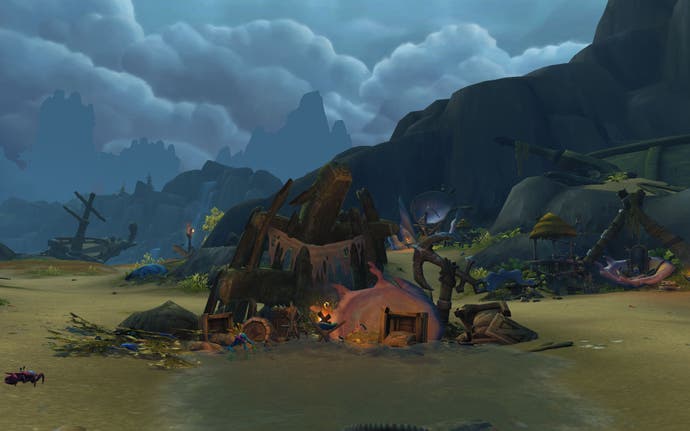
Going into the current Shadowlands beta test, which includes the full levelling experience as well as the high-level expansion areas, I had complicated feelings about all this. I have certainly played the game enough, and started enough new characters, over the last 15 years to understand the necessity of it. But the space that WOW - or, rather, Azeroth, the place that is the game - occupies in my mental geography is significant enough that I find it unsettling. The idea that a new player can undertake their journey through the game without ever setting foot on the wide pampas of the Barrens, or trudging through the Swamp of Sorrows, or really exploring the game's original continents at all - save the capital cities of Stormwind and Orgrimmar - gives me an uncomfortable feeling, like having a phantom limb or a false memory.
Of course, it's exceptionally well done. Exile's Reach, the tutorial adventure, is a smoothly paced taster that walks you through the basics of the game and your chosen character class in a little over an hour, culminating in a demonstration mini-dungeon. As a mechanical introduction to the game, it's flawless. As an introduction to the Warcraft's world? I'm disappointed that Exile's Reach plays out identically for Alliance and Horde players, never mind players of different races. The original starter experiences, individual to each race, do so much to create the intense sense of belonging and cultural identity that Warcraft - a world of fantasy archetypes so cartoonish they get away with being, frankly, a bit crass - has no business fostering, but does. (You can select the original starter experiences instead, if it's not your first character.)
Once I had tried a few different routes into the game, though, my nostalgic concerns started to look fragile in the face of the facts. Using Chromie Time - the time-warping feature, curated by an impish member of the Bronze Dragonflight - I went from Exile's Reach into Cataclysm's version of the original continents; into the aged Burning Crusade; into Legion, my favourite of the more recent expansions; and finally into Battle for Azeroth, as intended. And I had to face it: modern World of Warcraft is as big an advance over Cataclysm as that was over the original game. Probably bigger.
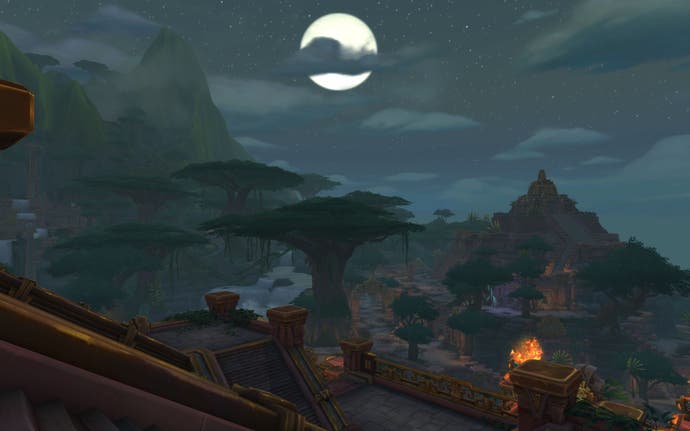
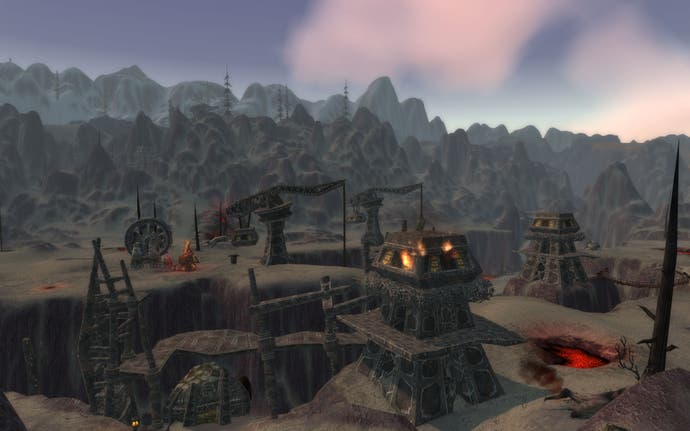
The worlds are so much more visually rich, more dramatically scaled. As much as my veteran soul might be stirred by the sight of the canyons of Thousand Needles or the windswept Borean Tundra, there is nothing in the older game that can touch your first sight of the great, burnished ziggurats of Battle for Azeroth's Zuldazar. The storytelling is so much more assured, pulled out of the quest text and into the action, while your progress through the game is given a strong thematic spine: base-building, a war campaign, a quest for a great artifact weapon. The world is less secretive but more bountiful, dotted with treasure and boss monsters to draw you off the beaten path. An invisible slot machine sometimes upgrades your quest-reward items with a flourish, just because you deserve it. It's such a luxurious experience. Should you have to trudge through 10-year-old content to get to this? Of course you shouldn't.
Naturally, there are some oddities. Whilst the level scaling handles most situations perfectly well, it is occasionally apparent that you are playing what was originally high-level content when not yet out of your teens: Legion's class-specific quests, for example, sometimes set up enemy patterns designed for skills you don't have yet. The quests don't break, but you can see the joins. Chromie Time, meanwhile, is not clearly signposted and a little confusing at present. You can, it seems, dot around between expansions at will using the existing geographical links, rather than asking Chromie to time-shift you to when you want to go, but it throws up some inconsistencies and scrambles some quest-lines (at one point, I entered Orgrimmar's great hall to find both Sylvanas and Garrosh were Warchief, simultaneously).
What this overhaul really does is change World of Warcraft from a game that is organised geographically, as a monumental odyssey through its many storied landmasses, to one that is organised chronologically. No, scratch that - narratively. WOW is no longer set over its entire history. It's set over the last two years. You can opt out of that if you want, but the game as good as points out to you that you're bending the rules to do so and taking an unwarranted excursion into the past. Why look back?
There's no reason to mind this. All that stuff is still there for you if you want it - indeed, so is the original, gruelling grind through the old world, in the form of WOW Classic. Moment-to-moment, the game is much better for the changes, especially for new players. A bewildering and intimidating beast of an MMO has become, if hardly small, then seductively streamlined. For the first time in a long, long time, the heights seem within reach from the foothills.
It's just strange, for me, that a game I always felt was about its places has put its narrative integrity first. It's strange to see 14 years' worth of landscape and adventure - 14 years I lived and levelled, fought and walked - neatly filed away where they won't bother anyone, unless they go looking. It's the right call, it just makes me wistful.
I'm definitely rolling another new character though.
